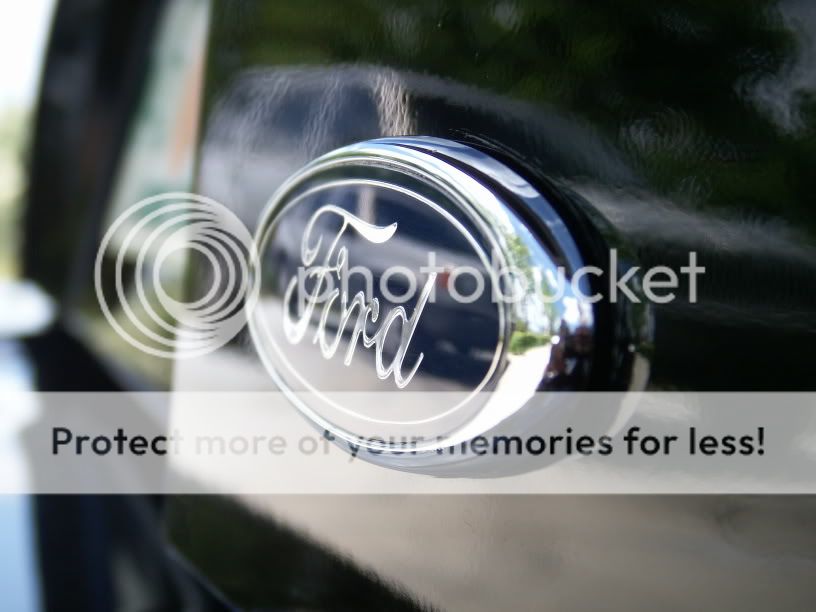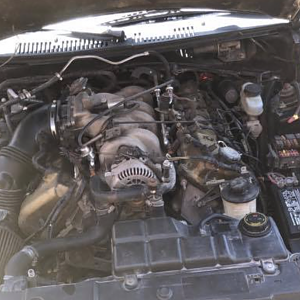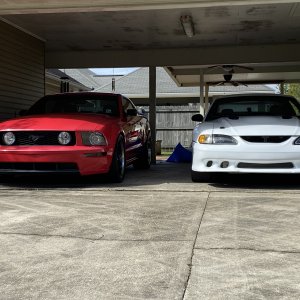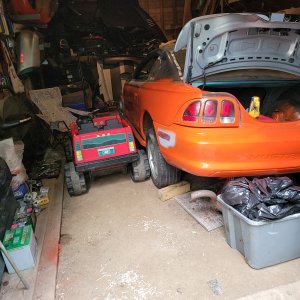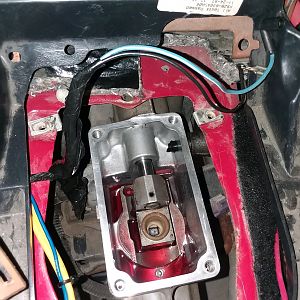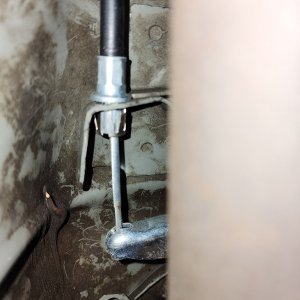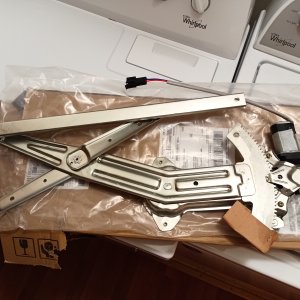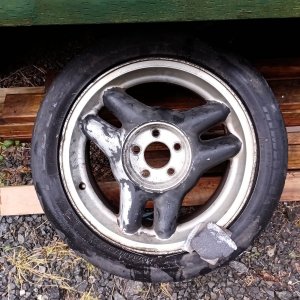I've seen a million people with the same problem. I want to help. Their body shop they paid to paint the car did not "Cut and Buff" their car. In fact, cutting and buffing are the same thing, so this expression means nothing. Sanding and Buffing is the term we use at Paul's Auto Body. Here are our STANDARD PROCEDURE step by step...
Orange peel is not when the paint drys before it hits the surface. It is just the clear coat, it will always be in every single paint job ever. There is no getting around it. These were all questions I had when I first started painting. There will also be dirt in the paint as well. The dirt doesnt look like "dirt" at all, it just looks like a fish eye (where clear lands on a silicone-like chemical, and lays around it not on it, and you cant fix it w/o repainting, ppl often add Fish Eye Eliminator which helps, but if that silicone is on your surface of painting, your forked)
I am going to jump to the final steps of "FINISH" work --
Remember when buffing, the buffer speed is VERY VERY important -
Step One- Paint car and clear it -
Step Two - You WILL HAVE ORANGE PEEL!!! (not much of a step) Wait till the clear is dry, according to the directions on the can, every clear is different. We have clears at my shop that dry fast enough to sand and buff within 2 hours. Others 2 Days.
Step Three - Wet sand or DA sand (dual action) with 1000 to knock the orange peel down. Do not go TOO far Because if you do, you wont have enough clear left to sand when you need to recess to finer grits, which is in the next steps.
STAY AWAY FROM EDGES (body lines, ends of panels, sharp curves, etc...) WITH DA. Only Wet sand carefully near edges.
Step 4 - Dry off car where wet, and look over it, clean it up w/ a terry cloth towel, and look over, you will know where you missed, and where you need to go over again, usually you will have to.
Step 5 - Dry off again. Your 1000 grit sand paper is too rough to fully buff out with compound. You can get away with it on light colors (white, lights silvers, beiges) But on darker colors, BLACK ESPECIALLY!!!. Go over entire car with 2000 grit paper. Now, 2000 grit is VERY easy to buff out, and going over the entire car with it will make your back breaking buffing much easier and faster.
Step 6 - Once 2000 grit wet sanding is done, clean car and dry with air blower or by any means nesessary. (Wool pads do not like water)
Step 7 - Now you are ready to buff - Buff with a wool pad first (only do 1-2 square foot sections at a time)(on light colors, when your done w/ the wool pad, all thats left is polish, but when working w/ dark colors, there are too additional pads, each foam, and of different textures) WHEN YOU THINK YOU ARE DONE BUFFING AN AREA, DO IT AGAIN!!!!!!!!!!!! You are not done with one shot. YOu must go over a square foot area at least 2-3 times thoroughly in order to buff everything up to a luster w/o missing anything.
Do the entire car like this, it will take time. And Do not rush.
BUFFER SPEED for Step 7 = 2000 RPMS at the MAX, feather the trigger when near edges (meaning let on and off frequently, in case the buffer grabs an edge, the wheel will stop rotation, instead of power through and burn you edge, than your screwed)
Step 8 - Once entire car has been gone over, clean off excess compound before polishing, and go over for dull spots. Buff them with Wool wheel.
Step 9 - Clean again, with terry cloth towel, and you are either ready to polish, or go onto your next pad (due to lightness and darkness of your particular color). Polish with a polish that is fresh clearcoat safe, ask your local auto body supplier and they will know. DO NOT WAX.
Dark Colors ---- TURN BUFFER TO CORRECT SPEEDS AS NOTED
Step 9 - Note - Buffer speed 1800 max, but I use it at 1500 - Switch buffer over to the velcro pad, which you will stick the White Foam pad onto. THis pad has a coarser texture, but not too coarse. (***NOTE*** New White pads come with edges that are not sharp to the touch, but are too sharp to use on your paint, you must get a peice of sand paper, and spin the pad using the buffer on the sand paper on the edge of the pad to kill that sharp edge, or it will cut through your clear - you will be glad I included that, trust me) ONce pad is ready, use little drips of compound, not nearly as much as when your buffing, and white pad the entire car, stay away from edges as much as possible, and be sure to feather the trigger around edges you need to.
Step 10 - When your done white padding, look at car, you will see swirls everywhere, this is normal. You are doing great. Next you are to take those swirls out. Switch to the black pad. This is a very soft polishing pad. Get a buffer safe polish, and do the same as you did with the white pad. You will feel like you have accomplished an amazing goal, this pad makes you feel very good about your job. (or very bad depending on how well your wool pad work was). Do the entire car, and than wipe excess compound with terry cloth towel.
Step 11 - Get a fresh clearcoat safe polish, and with a damp towel, apply to one panel at a time and use as directed on the bottle. Wipe to a beautiful luster and you have yourself a glass surface - (in accordance with very flat and nice bodywork)
I wish all of you the UP MOST LUCK with your finish work, because its alot harder than the actual paint job itself - it takes a touch, and a feel, and you must show it love, and affection, or it will burn you, it will burn right through and require repaint.
REMEMBER LET THE TOOLS DO THE WORK, DO NOT APPLY A TON OF PRESSURE CUZ A SPOT WILL NOT BUFF UP, IT IS LIKELY THAT THE CLEAR IS VERY HARD AND THERE IS NOTHING WRONG WITH THAT, LIKE I SAID, SHOW CARE AND TENDERNESS - AND YOUR PAINT WILL RESPOND THE SAME!!!!!!!!
GOOD LUCK!
By Paul Perreca at Paul's Auto Body - Thanks!
Orange peel is not when the paint drys before it hits the surface. It is just the clear coat, it will always be in every single paint job ever. There is no getting around it. These were all questions I had when I first started painting. There will also be dirt in the paint as well. The dirt doesnt look like "dirt" at all, it just looks like a fish eye (where clear lands on a silicone-like chemical, and lays around it not on it, and you cant fix it w/o repainting, ppl often add Fish Eye Eliminator which helps, but if that silicone is on your surface of painting, your forked)
I am going to jump to the final steps of "FINISH" work --
Remember when buffing, the buffer speed is VERY VERY important -
Step One- Paint car and clear it -
Step Two - You WILL HAVE ORANGE PEEL!!! (not much of a step) Wait till the clear is dry, according to the directions on the can, every clear is different. We have clears at my shop that dry fast enough to sand and buff within 2 hours. Others 2 Days.
Step Three - Wet sand or DA sand (dual action) with 1000 to knock the orange peel down. Do not go TOO far Because if you do, you wont have enough clear left to sand when you need to recess to finer grits, which is in the next steps.
STAY AWAY FROM EDGES (body lines, ends of panels, sharp curves, etc...) WITH DA. Only Wet sand carefully near edges.
Step 4 - Dry off car where wet, and look over it, clean it up w/ a terry cloth towel, and look over, you will know where you missed, and where you need to go over again, usually you will have to.
Step 5 - Dry off again. Your 1000 grit sand paper is too rough to fully buff out with compound. You can get away with it on light colors (white, lights silvers, beiges) But on darker colors, BLACK ESPECIALLY!!!. Go over entire car with 2000 grit paper. Now, 2000 grit is VERY easy to buff out, and going over the entire car with it will make your back breaking buffing much easier and faster.
Step 6 - Once 2000 grit wet sanding is done, clean car and dry with air blower or by any means nesessary. (Wool pads do not like water)
Step 7 - Now you are ready to buff - Buff with a wool pad first (only do 1-2 square foot sections at a time)(on light colors, when your done w/ the wool pad, all thats left is polish, but when working w/ dark colors, there are too additional pads, each foam, and of different textures) WHEN YOU THINK YOU ARE DONE BUFFING AN AREA, DO IT AGAIN!!!!!!!!!!!! You are not done with one shot. YOu must go over a square foot area at least 2-3 times thoroughly in order to buff everything up to a luster w/o missing anything.
Do the entire car like this, it will take time. And Do not rush.
BUFFER SPEED for Step 7 = 2000 RPMS at the MAX, feather the trigger when near edges (meaning let on and off frequently, in case the buffer grabs an edge, the wheel will stop rotation, instead of power through and burn you edge, than your screwed)
Step 8 - Once entire car has been gone over, clean off excess compound before polishing, and go over for dull spots. Buff them with Wool wheel.
Step 9 - Clean again, with terry cloth towel, and you are either ready to polish, or go onto your next pad (due to lightness and darkness of your particular color). Polish with a polish that is fresh clearcoat safe, ask your local auto body supplier and they will know. DO NOT WAX.
Dark Colors ---- TURN BUFFER TO CORRECT SPEEDS AS NOTED
Step 9 - Note - Buffer speed 1800 max, but I use it at 1500 - Switch buffer over to the velcro pad, which you will stick the White Foam pad onto. THis pad has a coarser texture, but not too coarse. (***NOTE*** New White pads come with edges that are not sharp to the touch, but are too sharp to use on your paint, you must get a peice of sand paper, and spin the pad using the buffer on the sand paper on the edge of the pad to kill that sharp edge, or it will cut through your clear - you will be glad I included that, trust me) ONce pad is ready, use little drips of compound, not nearly as much as when your buffing, and white pad the entire car, stay away from edges as much as possible, and be sure to feather the trigger around edges you need to.
Step 10 - When your done white padding, look at car, you will see swirls everywhere, this is normal. You are doing great. Next you are to take those swirls out. Switch to the black pad. This is a very soft polishing pad. Get a buffer safe polish, and do the same as you did with the white pad. You will feel like you have accomplished an amazing goal, this pad makes you feel very good about your job. (or very bad depending on how well your wool pad work was). Do the entire car, and than wipe excess compound with terry cloth towel.
Step 11 - Get a fresh clearcoat safe polish, and with a damp towel, apply to one panel at a time and use as directed on the bottle. Wipe to a beautiful luster and you have yourself a glass surface - (in accordance with very flat and nice bodywork)
I wish all of you the UP MOST LUCK with your finish work, because its alot harder than the actual paint job itself - it takes a touch, and a feel, and you must show it love, and affection, or it will burn you, it will burn right through and require repaint.
REMEMBER LET THE TOOLS DO THE WORK, DO NOT APPLY A TON OF PRESSURE CUZ A SPOT WILL NOT BUFF UP, IT IS LIKELY THAT THE CLEAR IS VERY HARD AND THERE IS NOTHING WRONG WITH THAT, LIKE I SAID, SHOW CARE AND TENDERNESS - AND YOUR PAINT WILL RESPOND THE SAME!!!!!!!!
GOOD LUCK!
By Paul Perreca at Paul's Auto Body - Thanks!

